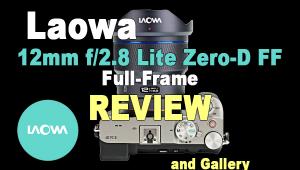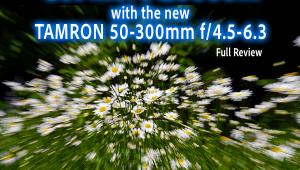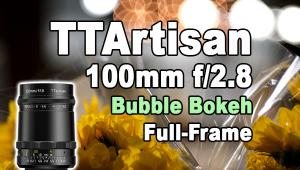Fast Fixed Focal Length Lenses; Sigma’s 30mm f/1.4 EX DC HSM And 50mm f/1.4 EX DG HSM
Although zoom lenses are certainly versatile and convenient, they do have some drawbacks, including relatively small maximum apertures. A typical 28-90mm equivalent zoom may provide an aperture of f/3.5 at short focal lengths but it will be f/5.6-6.3 at longer zoom settings. Granted, a few high-grade zooms feature a maximum aperture of f/2.8, allowing for faster shutter speeds in low-light photography. By comparison, a fixed focal length lens can feature a much wider maximum aperture. At one time, you could find a “fast” 50mm f/1.7 or f/1.8 lens in most camera bags, but over the past 15 years, zooms have virtually replaced this type of lens in most photographers’ camera bags.
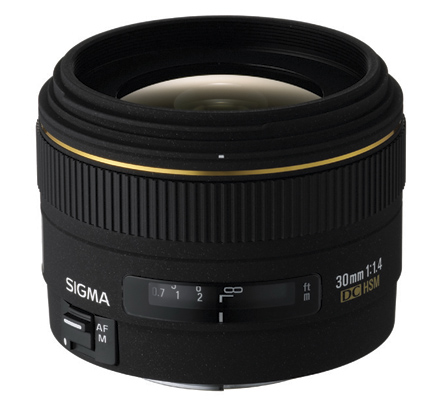 |
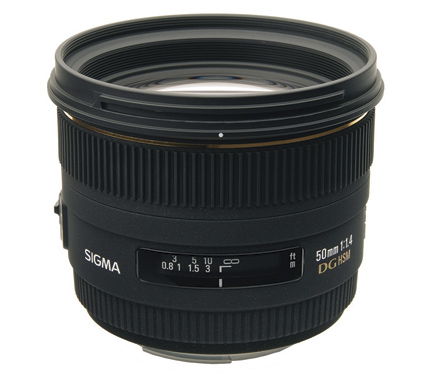 |
These days, you can still find a 50mm f/1.4 lens (with an even wider aperture) in most brands. Select f/1.4 and you can shoot at a shutter speed that’s four times faster than at f/2.8, eight times faster than at f/4, and 16 times faster than at f/5.6. That can allow for available light photography without flash or a tripod at much lower ISO levels where image quality is best with any camera. It’s also easier to focus manually in dark locations because the viewfinder is much brighter at a very wide aperture. As a bonus, depth of field is also substantially more shallow at f/1.4, useful in situations where you want to blur distracting elements in the background.
Sigma offers “normal” f/1.4 lenses with all of the latest optical and autofocus technology. The 50mm model is a multi-format lens, suitable for 35mm SLR cameras and for D-SLRs with a full-frame (24x36mm) or a smaller APS-C-size sensor. On the latter cameras, it’s actually a short telephoto with an equivalent focal length of 75-100mm depending on the exact sensor size. That’s why Sigma also makes a 30mm f/1.4 model, providing a 45mm, 48mm, 51mm, or 60mm equivalent depending on the exact field of view crop produced by a D-SLR’s sensor.
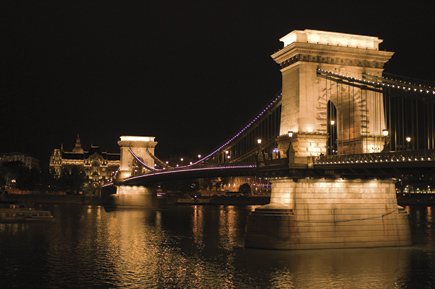 |
|
|
Sigma’s 50mm f/1.4 EX DG HSM
The largest/heaviest current lens of this type, the Sigma model features a massive front element to minimize vignetting (darkening at the corners). The very rugged oversized barrel contains eight large pieces of glass and a ring-type (ultrasonic) Hyper Sonic Motor (HSM) for high-speed autofocus and full-time manual focus override. Neither the ring or the front element rotate during autofocusing. The designers specified an aspherical lens made of molded glass for aberration correction and a diaphragm with nine blades. The latter provide a circular aperture so out-of-focus highlights appear round even at mid-size apertures.
The HSM autofocus system—also available with the 30mm f/1.4 model—ensures that AF will work with Nikon cameras without an AF motor (D40, D40X, and D60). However, older (non-current) Pentax D-SLRs do not support ultrasonic AF; when used with one of those cameras, only manual focus is available. This multi-platform lens is optimized for digital capture but it’s just as suitable for film photography. The use of “super multilayered” coatings on all glass surfaces minimizes flare caused by a highly-reflective silicon sensor and its glass cover. Naturally, this feature—plus the corner-cut lens hood with internal ribbing—also provides great resistance to flare from external light sources.
Performance: Since most of my testing was done at f/1.4, I was pleased to note that image quality was very decent at this aperture. Center sharpness is high at f/1.4 and edge sharpness is quite acceptable. Both aspects become superb at f/5.6 and f/8, the optical “sweet spot.” Slight barrel distortion is noticeable but only in photos made of a brick wall. Both flare and chromatic aberration (purple fringing) are remarkably well controlled; a few of my wide aperture images exhibit color fringing around bright edges, but that disappears by f/2.8.
Although this Sigma 50mm f/1.4 lens produced very fine images when used with a full-frame Canon EOS 5D Mark II, I used an EOS Rebel XSi (with a smaller sensor) for most testing. That’s because the vast majority of D-SLRs of all brands employ an APS-C-size sensor. The smaller chip records only the central area of the image circle projected by the lens so vignetting (darkening at the corners) was minimal even at f/1.4 when I used the EOS XSi camera. Such “light falloff” or “shading” was more obvious in full-frame wide aperture photos that included the sky, but became negligible by f/2.8.
While examining images made in side-by-side testing with both cameras—on a pro 21” monitor—I noted that some wide aperture photos made with the XSi appeared to be softer. Under close examination, it’s clear that the difference is due to the shallower depth of field produced by the much smaller sensor; even the slightest focus inaccuracy produces lower sharpness that’s noticeable under high magnification.
With either EOS camera, autofocus was fast and nearly silent thanks to the HSM motor. The full-time manual focus feature allows for tweaking focus slightly when using AF; there’s no need to flip the switch to MF. The wide, rubberized focus ring is a bit stiff in operation, but smooth, and the extra friction provides a familiar “feel.” It’s also worth noting only the focused plane is really sharp at f/1.4 regardless of the camera that’s used. This aspect makes critical focus—on the most important subject area—essential in close focusing where depth of field is particularly shallow.
Evaluation: This Sigma 50mm lens is large, heavy, and expensive but offers outstanding build quality as well as better than average image quality even at very wide apertures. When shooting street photos at night, and inside dark cathedrals at f/1.4, I was able to get an adequately fast shutter speed (1⁄60 sec) for sharp handheld photos at ISO 400. By comparison, a typical zoom—with a much smaller maximum aperture—would have required a much higher ISO for a good exposure at the same shutter speed. Since all D-SLRs provide the best quality at lower ISO levels, an f/1.4 lens is preferable for low-light photography.
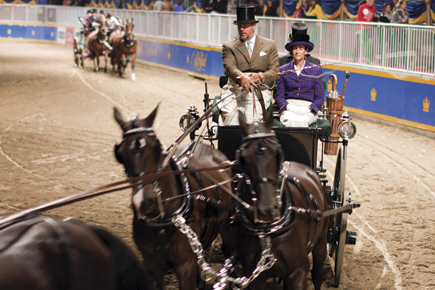 |
|
|
Sigma’s 30mm f/1.4 EX DC HSM
Designed for D-SLRs employing the smaller APS-C sensor, this is the only “normal” f/1.4 lens for cameras of that type. While it’s also rugged, this model is considerably more compact, lightweight, and affordable than the multi-platform 50mm lens. In spite of the lower price, the 30mm lens provides similar features, including the (ultrasonic) HSM focus motor; HSM is available in all mounts except for Sony/Maxxum cameras. The optical formula is even more impressive, including a hybrid aspherical element plus one piece of ELD (Extra Low Dispersion) glass and a large diameter SLD (Super Low Dispersion) element. This combination was intended to correct distortion and all types of optical aberrations.
Note: Like any small format lens—called DT, DX, and DC by Sony, Nikon, and Sigma respectively—the 30mm f/1.4 DC model can be used with Sony and Nikon full-frame sensor D-SLRs. Because this smaller lens cannot project an image circle that will fill the 24x36mm sensor, the actual image will be smaller so the resolution will be roughly 60 percent less than it would be when using a larger multi-format lens.
Since I wanted to test this 30mm f/1.4 lens on a camera with a built-in Image Stabilizer, I used the Sony/Maxxum mount version on a Sony A350 camera; this combination provided conventional (not ultrasonic HSM) autofocus. The A350 sample produced some focusing errors with AF in low light—even when using only the central focus detection point—during quick picture taking. After recognizing this problem, I took extra time to ensure that focus was accurate for subsequent shots. I did try the 30mm lens with Canon mount on an EOS XSi; the HSM motor in that lens provided greater AF speed and I did not notice any focusing problems.
 |
|
|
